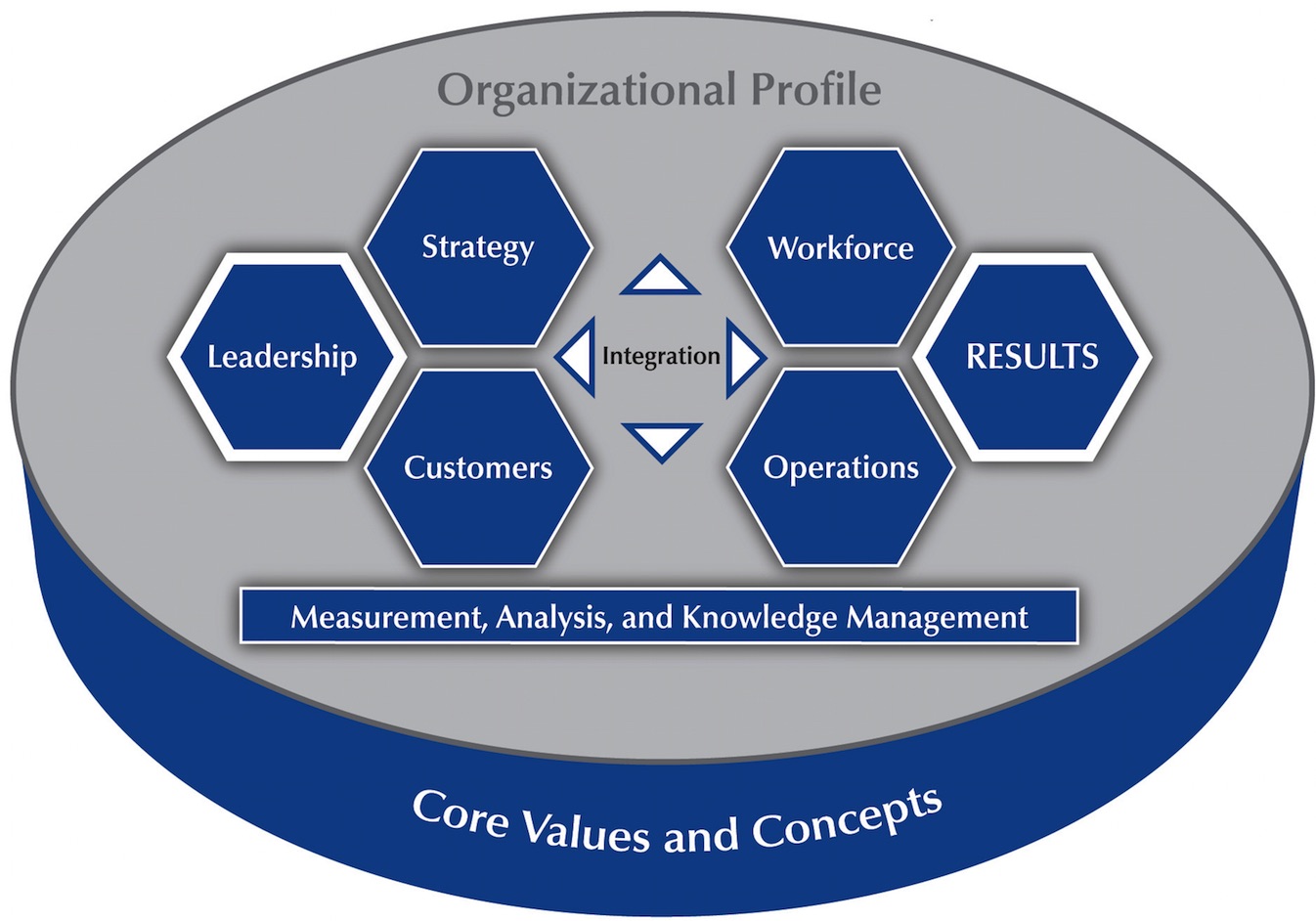|
So, Is It
Really TQM?
Yonatan
Reshef
School of Business
University of Alberta
Edmonton, Alberta
T6G 2R6 CANADA
Based on George S.
Easton and Sherry L. Jarrell. 2000. "The Effects of TQM on Corporate
Performance: An Empirical Investigation." In Casey Ichniowski et al.
(eds.). The American Workplace: Skills, Compensation, and Employee
Involvement.
Cambridge University Press: 172-233.
Empirically, exactly what constitutes
TQM is a subject of debate. Easton and Jarrell (2000) define TQM to be
a management system that substantially addresses the following criteria
for performance excellence of the Malcolm Baldridge National Quality
Award, which was created by Congress in 1987. Note, nowadays (2015), the criteria are somewhat different. You can read about them here. You can also use the useful glossary.

|
FACTOR |
EXPLANATION |
|
Process focus
|
Process focus means an emphasis on the concept of process as a
fundamental building block of the organization. This results in a widespread
emphasis on process definition, process management, and process improvement.
|
|
Systematic improvement |
Systematic improvement means a widespread systematic organizational focus
on quality improvement, cycle-time reduction, and waste (cost) reduction and the
adoption of a prevention-based orientation.
|
|
Company-wide emphasis |
The process concept and the emphasis on improvement are applied
throughout the company, including product development and business support
processes.
|
|
Customer focus |
Customer focus includes (1) emphasis on customer requirements and
customer satisfaction to define product and service quality (“customer-defined
quality”); (2) emphasis on customer service
(lead-time reduction, on-time
delivery, field support, technical support, etc.); (3) integration of customer
information into the management and improvement systems - particularly into the
new-product development process and the production and service quality control
and improvement processes; and (4) efforts to become integrated with customers
as appropriate (often called “partnering”), such as joint improvement teams, or involving
customers in the company's internal processes, such as planning, new-product development, R&D, or technology forecasting.
|
|
Management-by-fact |
Management-by-fact means an emphasis on the deployment of systematic
analysis and fact-based decision making driven by
objective data and
information. This includes a focus on the deployment and tracking of
metrics and on knowledge management -- capturing and making
available, so it can be used by others in the organization, the
information and knowledge that is in people's heads as it were, and
that has never been explicitly set down.
|
|
Employee involvement and development |
Employee involvement in improvement (quality, cycle time, and waste), usually through teams, is widespread, and there is a strong emphasis on
employee development through training. This emphasis is generally
associated with a tendency to drive decision making close to the actual
processes and thus to increase employee empowerment.
|
|
Cross-functional management
|
There is explicit emphasis on cross-functional management that includes
cross-functional improvement teams as well as cross-functional involvement in other key
processes, such as new-product development.
|
|
Supplier performance and supplier relationships |
Supplier management
includes
emphasis on supplier quality and service performance, supplier
capabilities,
supplier improvement, and supplier involvement and integration
(supplier
partnerships), such as joint quality improvement, and participation in
new-product development, technology development and planning, and even
strategic
planning.
|
|
Recognition of TQM as a critical competitive strategy |
There is widespread
recognition that implementation and aggressive refinement of the above
management model is a critical competitive strategy and thus a primary concern
of all levels of management, including senior management.
The role of senior
management in providing leadership for the development and deployment
of quality improvement is a natural consequence of the recognition of
quality improvement as
a critical competitive strategy.
|
Open questions 1. Should a firm pursue all of the
above before it can claim to have implemented TQM?
2. How
widespread is TQM?
3. Is the
commitment to TQM long term?
|